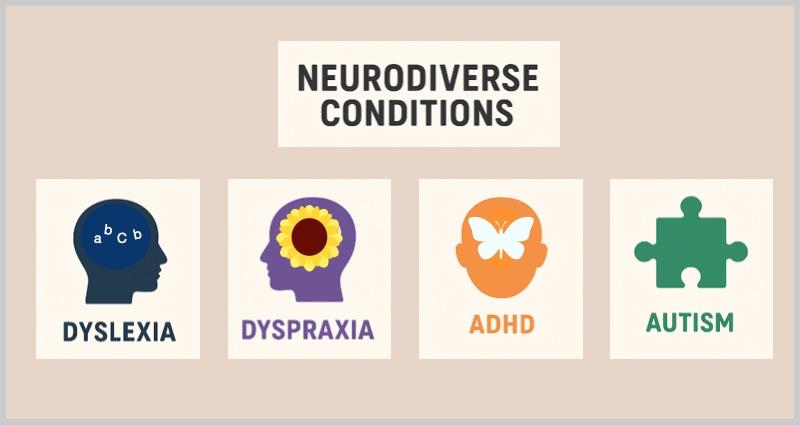
The Value of Touch Typing for Neurodiverse Students
Why It Matters
A growing number of university students identify as neurodiverse, with dyslexia, dyspraxia, ADHD, and autism being among the most common conditions. These students often experience barriers with written expression, which can impact confidence, performance, and engagement.
Touch typing is a proven, simple, and high-impact strategy that can reduce these barriers and empower students to achieve their full potential.
Benefits by Condition
1. Dyslexia & Specific Learning Difficulties (SpLDs)
Reduces cognitive load: Automating the typing process frees up working memory, allowing students to focus on ideas rather than the mechanics of writing.
Supports spelling: Repeated finger patterns help reinforce word shapes and builds muscle memory, reducing spelling errors.
Improves legibility: Typed work avoids issues with handwriting clarity, reversals, or inconsistent spacing.
Compatibility with assistive technology: Touch typing integrates seamlessly with spellcheck, text-to-speech, and predictive text tools.
Minimises motor strain: Typing is less physically demanding than handwriting, reducing fatigue.
Promotes consistency: The fixed keyboard layout removes the motor planning challenges of handwriting.
Enables fluency: Students can express ideas more easily without being slowed down by handwriting difficulties.
Supports focus and productivity: Fast typing helps students capture ideas before attention shifts.
Facilitates organisation: Typed text is easy to edit and restructure, supporting planning skills.
Reduces frustration: Quicker, clearer output improves confidence and persistence with tasks.
Alternative communication: Typing can be a less stressful way of expressing ideas than handwriting or speaking.
Predictability and structure: The keyboard layout offers consistency, which many autistic students find reassuring.
Reduced sensory stress: Typing avoids the sensory challenges some students experience with handwriting.
Benefits Across All Groups
Independence: Students can produce written work with less reliance on external support.
Confidence: Clear, typed work reduces anxiety about presentation and errors.
Future readiness: Touch typing is an essential skill for higher education, employment, and daily life.
Conclusion
Touch typing is more than just a practical skill — it is an inclusion tool/strategy. Removing barriers to written expression and making written communication faster, clearer, and less stressful allows neurodiverse students to participate fully, demonstrate their knowledge and ability, and thrive in academic settings.
Copyright KAZ Type Limited 2025. KAZ is a registered trade mark of KAZ Type Limited.
Developed by : STERNIC Pvt. Ltd.